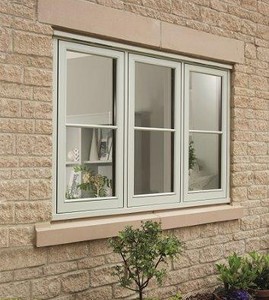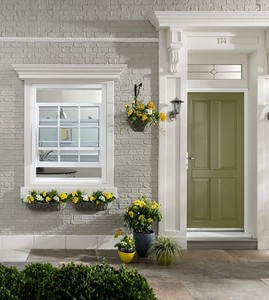The right window makes an enormous difference to both the look of a property and the way that it functions. If you’re shopping for a window, then you’ll be face with two main categories to choose from. These are casement windows and sash windows. Each has their relative strengths, which you’ll want to consider before making a commitment to one or the other (especially since, for the sake of consistency, it’s generally advisable to use the same sort of window throughout your home).
While personal taste will obviously impact your decision, it’s also important to consider the functional differences between the two sorts of window. This article will explain those differences, to help you come to a decision that’ll suit your home.
What is the difference?
Before we get started with comparisons, let’s first establish what it is that we’re talking about. Exactly what is the difference between a sash window and a casement window?
Casement windows
Casement windows are the most common type of window in Europe. They come equipped with hinges which allow them to swing open. Generally, they come in pairs which open away from one another, like a set of double-doors.
Casement windows also feature a crank which doubles as a window lock. This might look just the same as a handle – but it’ll also ensure that the window is locked in place while it’s open. This will prevent the wind from moving the window around and causing problems.
Sash windows
Sash windows came into prominence in the Georgian era (though they were first introduced much earlier), and they remained popular well into Victorian times. Sash windows consist of one or more panels, or sashes, which slide atop one another to create openings. Most commonly, these panels move vertically – but you can get horizontally-opening sash windows, too. Vertically-opening sash windows are assisted by balancing weights, pulleys and springs, which are hidden within the window frame and assist with opening the window. They also allow the sash to stay in position once the window is opened.
There are two varieties of sash window to choose from – those which feature two mobile sashes, or ‘double-hung’ windows; and those which feature just one mobile sash and a fixed one, usually at the top of the window. The former style is more common nowadays, and allow for greater flexibility for a marginally-increased cost.
Which one is best for my home?
In order to choose between them, you’ll need to assess the merits of each. Let’s run through a few of the most important ones.
What are the advantages of a casement window?
- Casement windows tend to be very energy efficient, as they come with a tight seal around the edges which will compress when the window is closed. When it comes to draught-excluding prowess, then, they’re second only to fixed windows (those which don’t open at all). Are casement windows more energy efficient than sash windows, though? The answer varies according to the design; the truth is that modern sash windows provide strong competition, as they come equipped with substantial seals of their own.
- Casement windows offer a contemporary look, and form a great match with more modern homes. They’re available in a range of materials, and thus choosing one is simply a matter of choosing the right material and style.
- Since the lock is embedded into the frame of a casement window, they’re also a great deal more difficult to break into. A would-be intruder will need to break into the casing itself – and simply prying it open using brute force won’t be an option.
- You’ll also find that taller casement windows are easy to open and close, as you won’t need to reach upward to fully extend them as you might a sash window. If you’re a little on the short side, this might tip the balance in favour of a casement window.
- Finally, one of the biggest advantages of a casement window is that it’ll provide larger glass panels. This will provide an unobstructed view outside, whilst letting the maximum amount of light into your home.
What are the advantages of a sash window?
- Sash windows are easier to open if there is an obstruction in front of the window. If you’re shopping for your kitchen, for example, and have to reach all the way over the sink in order to fully open the window, then sash windows might provide a better alternative.
- Sash windows are simpler in design than casement windows. With fewer moving parts to malfunction, their failure rate tends to be a little lower. Moreover, when problems do occur, they’re usually simple to fix – a common one being a ‘dropped window’ where the sashes aren’t being held up correctly by the balancing weights built into the jambs.
- Sash windows offer a traditional style that’s a fantastic match for period properties. If you’re the owner of a Georgian or Victorian home, then you’ll probably find that no other style of window looks quite as good as a sash window.
- Sash windows also don’t require any space outside the window to open. If your home is built right up against another wall, then sash windows might well be your only option. The same is true if there’s a tree growing nearby – since sash windows don’t open outward, there’s little chance that you’ll inadvertently open it into an obstacle.
So what should you choose – a sash window or a casement window?
As we’ve seen, both technologies offer distinct plus points. Your choice will therefore depend on your circumstances and personal preference – and there are no real right answers! Whichever style you choose, you’ll want to be sure you’re sourcing your windows from a reputable supplier. Suffice to say, we here at Windows and More have the items you need, along with the expertise required to get the best from them.
Looking for new windows for your home? Browse our sliding sash or casement windows or find out about our handmade bespoke windows.




